Staying on top of the ebbing and flowing tides of cool can be a very difficult thing to do. Online dating, for example, was once the exclusive domain of people who smelled vaguely of cats, owned several replica lightsabers or, very occasionally, collected human skins from still-living humans. And yet these days, people are swiping left and right like they’re conducting an orchestra. And in public, no less.
Likewise, but opposite, rollerblading while wearing a Von Dutch trucker cap and screaming “waassuupp” at everyone you rolled past was once the very height of cool, but attempting the same today will (or at least should) see you sentenced to death, preferably by rollerblade.
The point being, cool (or uncool) rarely lasts forever. But if anything can stand the test of time, the new Range Rover Velar is the car to do it.
Range Rover’s sleek and stunning SUV - tested here in SE R-Dynamic D240 guise - is dripping in cool at every turn, from the hidden door handles that emerge when you unlock it to the puddle lights that illuminate the ground as you approach it, to its cabin wrapped in swathes of luxurious tanned leather.
So it has got style, sure. But does it have the substance to go with it?
Land Rover Range Rover Velar 2018: D180 HSE
| Engine Type | Diesel Turbo 4, 2.0L |
|---|---|
| Fuel Type | Diesel |
| Fuel Efficiency | 5.4L/100km (combined) |
| Seating | 5 |
| Price From | $62,370 - $71,720 |
| Safety Rating |
|
Is there anything interesting about its design?
9 / 10
It is so close to perfect it’s incredible, with a rear end that juts out too far over the rear tyres the only noticeable downside.
But that’s a small complaint, really, and the Velar looks stunning from every other angle. From the black grille that splits the two thin headlights, to the flared guards that frame snug-fitting 20-inch alloys. Our car was the R-Dynamic bodystyle, too, which adds branded treadplates, that leather steering wheel and a sportier-looking front end (but adds $6k to the purchase price).
.jpg)
Climb inside, though, and things get even better. This is a world-class interior that is seriously, seriously cool. Great swathes of tan leather coat every touch point, the twin-screen infotainment system looks sleek and modern, and the choice of materials is first rate - a sea of polished silver, gloss-black highlights and one of the sexiest steering wheels in existence.
Up front, you’re faced with an almost overwhelming amount of technology, from the digital driver’s binnacle to the twin digital centre screens that operate everything from seat-massage functions (but remember, you’re paying more for that) to the media settings.
.jpg)
How practical is the space inside?
8 / 10
At 4803mm long, 2145mm wide and 1665mm high, there’s no shortage of Range Rover Velar, and so the space in either row is really very good.
Up front, there are two cupholders, and a tiny storage cubby next the the rotary gear dial. The deep storage bin that separates the front seats is home to two USB ports, a SIM card reader, a power outlet and a HDMI connection.
There is a huge amount of leg and headroom in the back, especially behind my diminutive (5ft 8 inch) driving position, but even taller riders will have no trouble. You could squeeze three adults in the back, too.
.jpg)
Elsewhere, a pull-down divider houses two cupholders, and there is room in each door for bottles. There are vents for backseat riders, and a single 12-volt power source. Finally, there are two ISOFIX attachment points, one in each window seat in the back.
The easy-access boot is deceptively large, too (though the overhanging rear-end is a bit of a give-away), with close to 558 litres available with the rear seats in place. That number grows to 1616 litres with those seats folded flat - big enough, I can report, to fit a new screen door from Bunnings.
.jpg)
A space-saver spare is standard fit, and you can opt for a cost-option alloy wheel if you wish, but it will eat into boot space if you do.
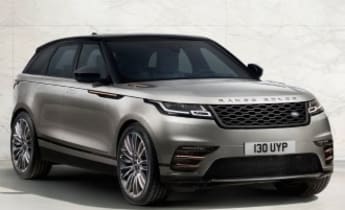
Does it represent good value for the price? What features does it come with?
8 / 10
Deciphering the Velar model lineup is like gazing upon the mind of a madman. Think eight model grades, a total of six engines and an options list that could make a Packer wince.
Our test car is the Velar R-Dynamic body style in SE trim and fitted with the middle-rung of the three diesel engines on offer. It comes with a list price of $106,950.
That money buys you 20-inch alloys outside, along with those auto-deploying door handles, heated mirrors, Range Rover puddle lights, keyless entry and start, a powered boot and a set of very cool “Matrix LED” auto headlights with DRLs.
.jpg)
Inside, expect leather seats and trim, powered front seats, one of the best steering wheels in the business and a thumping 17-speaker Meridian sound system.
On the tech front, navigation is standard, and is controlled through the awesome (though sadly Apple CarPlay and Android Auto-free) dual-screen 'Touch Pro Duo' system, which makes use of two 10-inch touchscreens. They join a third, 12.3-inch digital instrument display that replaces the analogue dials in the driver's binnacle.
All of that is the good news. In news that is less good, the Velar arrives with an option list so tall it’s unlikely even a Rangie could drive over it. Our test car was fitted with all sorts of goodies, but they will set you back thousands.
To put that into perspective, our test car (with its list price of $106,950, you'll recall) will actually cost you more than $140,000 once you've ticked and paid for its options. Even the vast internet lacks the space to fully detail them, but some highlights include the heated, cooled and massaging seats, which will set you back $7730, and the extended leather interior, a snip at $3480.
What are the key stats for the engine and transmission?
7 / 10
The middle rung of the diesel ladder is the 1999cc D240, which will produce 177kW at 4000rpm and a healthy 500Nm at 1500rpm. That's enough to produce a 7.3-second sprint from 0- 100km/h, and to push it to a top speed of 217km/h.
.jpg)
That power is fed through an eight-speed automatic and sent to all four wheels via a standard single-speed transfer box. The diesel setup will produce a 2.4-tonne braked towing capacity.
How much fuel does it consume?
7 / 10
Range Rover serves up claimed/combined fuel figures of 5.8L/100km and C02 emissions of 154g/km. But the fuel figures seem mighty hopeful - the on-board computer read north of 10 litres per 100 kilometres when we dropped it back...
What's it like to drive?
8 / 10
For something that feels as plush as a cigar lounge (and, at more than 1.8 tonnes, weighs about the same, too), there's a surprising lightness to the way the Velar goes about its daily chores. In the city, it doesn't really matter whether the transmission is set to Sport or normal Drive, the Velar is a silky-smooth commuter, provided you treat the go-pedal lightly.
Go too hard on the gas, however, and the engine can feel a little laggy, and more weirdly, it's only under hard acceleration that the Velar starts to feel heavy, and you can feel the engine working hard to shift the Range Rover's considerable bulk. Importantly, though, it never feels that way when you're tootling around the city, which is where it will surely spend the vast majority of its time.
It's the technology overload that impresses the most.
Previous testers have found the steering a little wooden, and that could be an issue on the sportier models, but I personally think it suits the nature of the low-powered diesel pretty well, offering enough engagement without darting at the slightest input. The ride, too, is almost always great; soft enough to weed out all but the worst road issues (but really sharp bumps will clatter into the cabin), while never feeling spongey or billowy.
If you have a Trumpian need for power, you best shop further up the engine range, with the 500Nm of torque on offer sounding plenty on paper, but lacking the punch in the real world to really get the Velar up and moving,
Still, the seats are outrageously comfortable (although our test car was fitted with cost-option versions), and the vision is mostly terrific, except out of the back window. But it's the technology overload that impresses the most. It's all just so damn cool.
Warranty & Safety Rating
What safety equipment is fitted? What safety rating?
8 / 10
The Velar scores an impressive standard safety haul of six airbags, a reversing camera, AEB with pedestrian detection, reverse cross-traffic alert, lane-departure warning and a tyre-pressure-monitoring system.
The SE adds active cruise control and a 360-degree parking aid (which is like having parking sensors everywhere).
What does it cost to own? What warranty is offered?
7 / 10
An underwhelming (but sadly pretty standard in the premium world) three-year, 100,000km warranty is standard, but it is helped by the 24 month/34,000km service intervals offered on the diesel engine.
Verdict
Cooler than a frozen polar bear, the Velar SE R-Dynamic cuts such a fine figure on the road that you'd forgive it for driving like a broken slinky. Happily, then, it doesn't. Smooth, comfortable and a treat to pilot, the Velar D240 is absolutely playing with the segment's best. Just keep an eye on that options list...
Is the Velar the most beautiful SUV ever made?
Pricing Guides

Range and Specs
| Vehicle | Specs | Price* |
|---|---|---|
| D180 | 2.0L, Diesel, 8 SPEED AUTOMATIC | $36,080 - $42,900 |
| D180 HSE | 2.0L, Diesel, 8 SPEED AUTOMATIC | $62,370 - $71,720 |
| D180 R-Dynamic | 2.0L, Diesel, 8 SPEED AUTOMATIC | $39,600 - $46,530 |
.jpg)
.jpg)
.jpg)
.jpg)


.jpg)

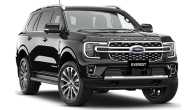





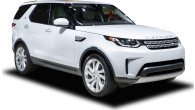








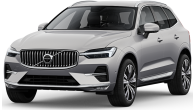






.png)






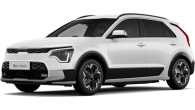

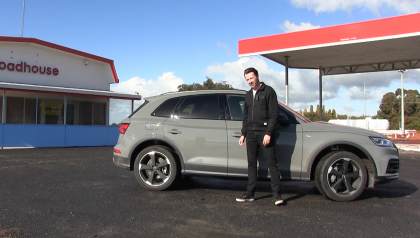
.jpg)
.jpg)

.jpg)

